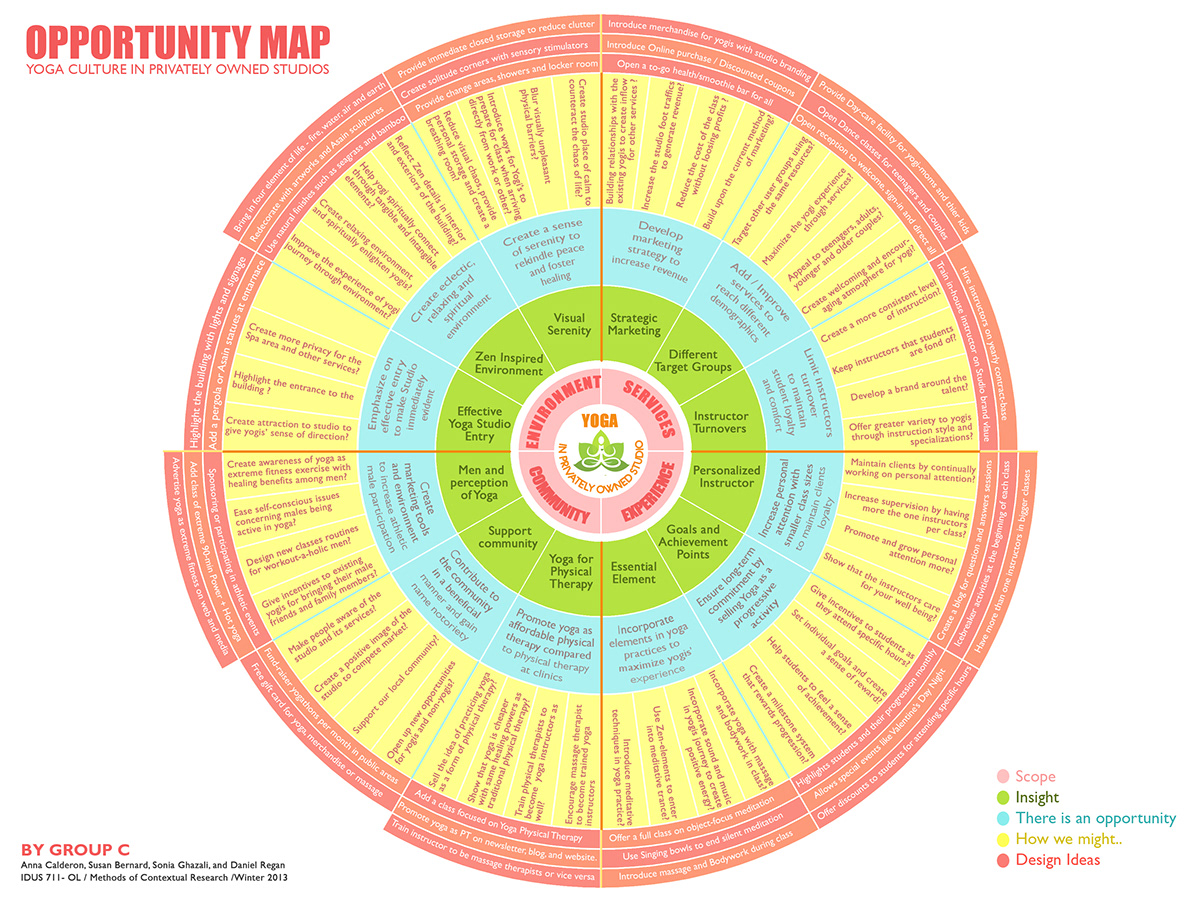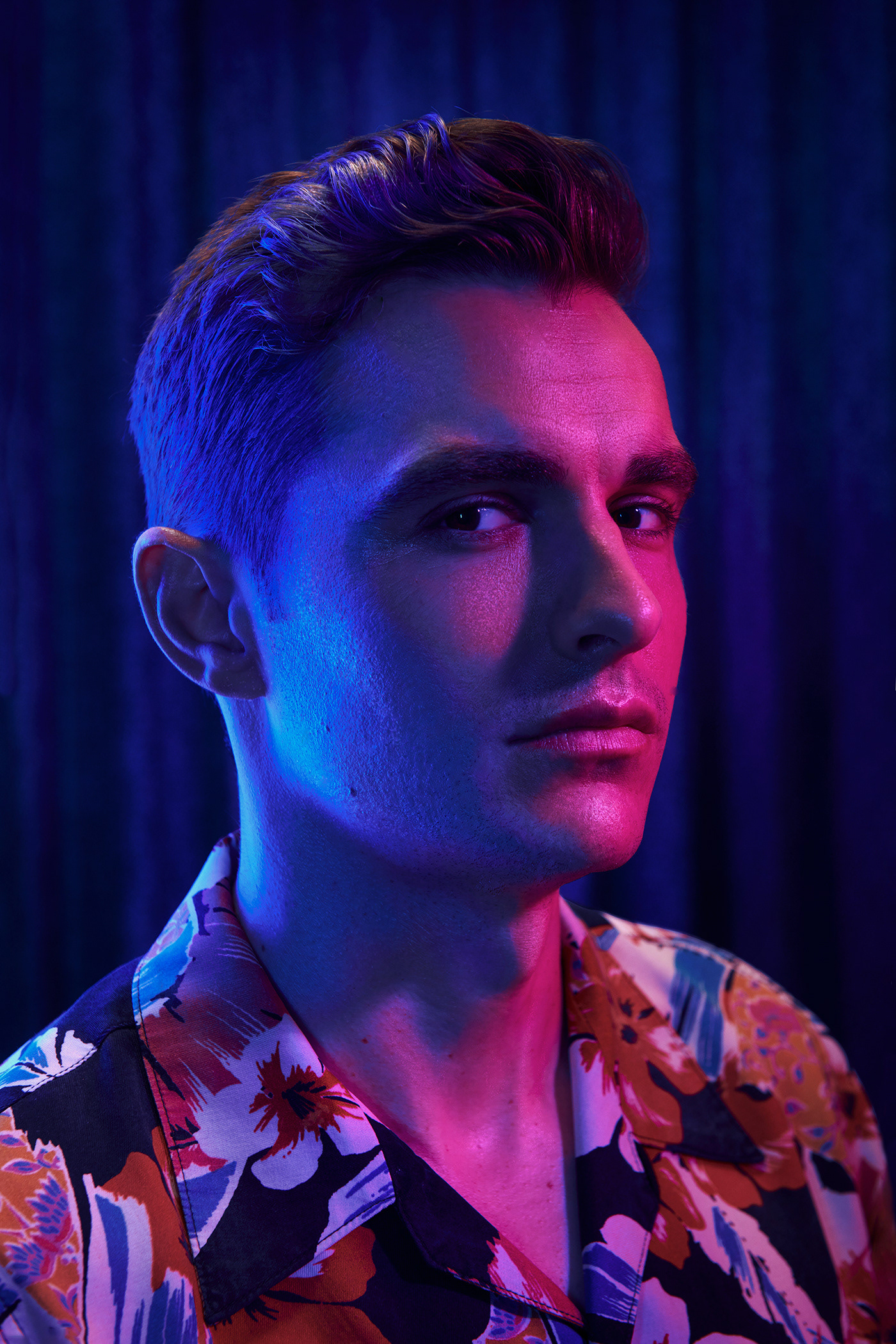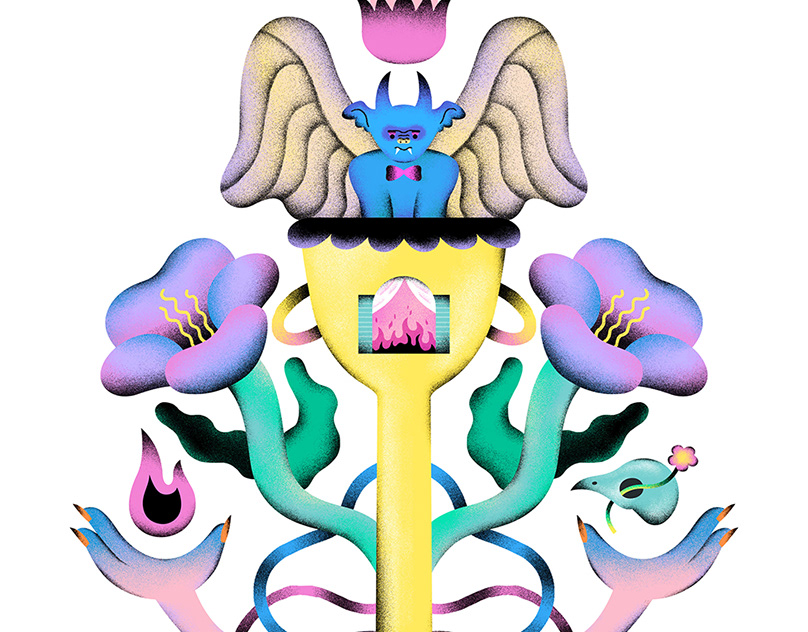PROJECT OVERVIEW:
The goal of this project was to experience various contextual research methods and techniques of ‘Yoga’ in privately owned studios. A Privately owned studio refers to a yoga studio that is not within a gym or other place of practice; it is a private studio dedicated primarily to teaching Yoga. Yoga is a term used for a discipline which originated in ancient India that employs a broad holistic approach that focuses on teaching people a new lifestyle, way of thinking, and way of being in the world.
This study focused specifically on Vinyasa Yoga, in which movement is synchronized to the breath. This style is sometimes also called Flow Yoga, because of the smooth manner that the poses (asana) run together as a
dance. The breath becomes an important component because the teacher will instruct you to move from one asana to the next on an inhale or exhale. Vinyasa is literally translated from Sanskrit as meaning “connection”, according to Dr. Ellen Stanshell, PhD, RYT, a scholar of Yogic literature and Sanskrit.
This study focused specifically on Vinyasa Yoga, in which movement is synchronized to the breath. This style is sometimes also called Flow Yoga, because of the smooth manner that the poses (asana) run together as a
dance. The breath becomes an important component because the teacher will instruct you to move from one asana to the next on an inhale or exhale. Vinyasa is literally translated from Sanskrit as meaning “connection”, according to Dr. Ellen Stanshell, PhD, RYT, a scholar of Yogic literature and Sanskrit.
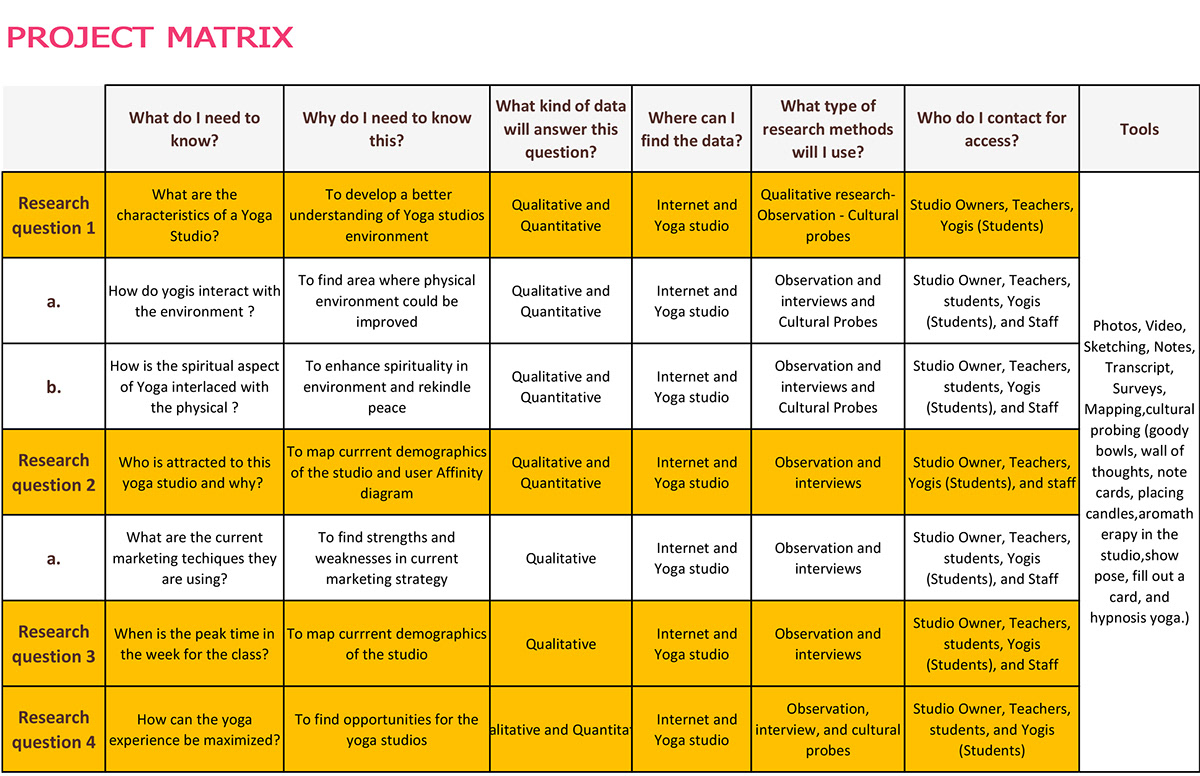
SCOPE:
This study will focus on the contextual research, analysis and synthesis of findings regarding the Yoga experience (Vinyasa Flow – beginner and advanced level) in stand alone studios. This project will not include Yoga in gyms. This study will include the Yoga studio owners, students, and instructors.
VALUE PROPOSITION:
For Yoga studio owners, teachers, and students who are dedicated to the quality of Yoga instruction and environment provided, this study provides insight into the Yoga experience in stand-alone studios and the opportunity to examine the culture within its environment.
This is done by using contextual research methods, including contextual inquiry, empathetic research, lifestyle profiling, interviewing, questionnaires, and a third party method of probing technique to analyze data collected to discover opportunities for innovation in maximizing the Yoga experience.
Unlike a traditional marketing approach which is typically focus-group driven, this study will take an all-inclusive approach to study Yoga through the application of design thinking.
METHODOLOGY:
The research methodologies of observation, interview, and a third probing method, "Wall of Thoughts', were used in providing answers to research questions. These three methods allowed the most significant amount of data cultivation without an invasive approach that would adversely affect the research.
1. OBSERVATION:
Through observation, instructors and Yogis were passively and actively monitored. This unfiltered style of data cultivation allowed for the collection enclosed. Observations included: how the students interact with their physical surroundings, how the relationship between student and instructors affected the over all Yoga experience, how the degree of complexity affected the class and the progression of the students as well as to gauge visible signs of emotional change (pre and post class).
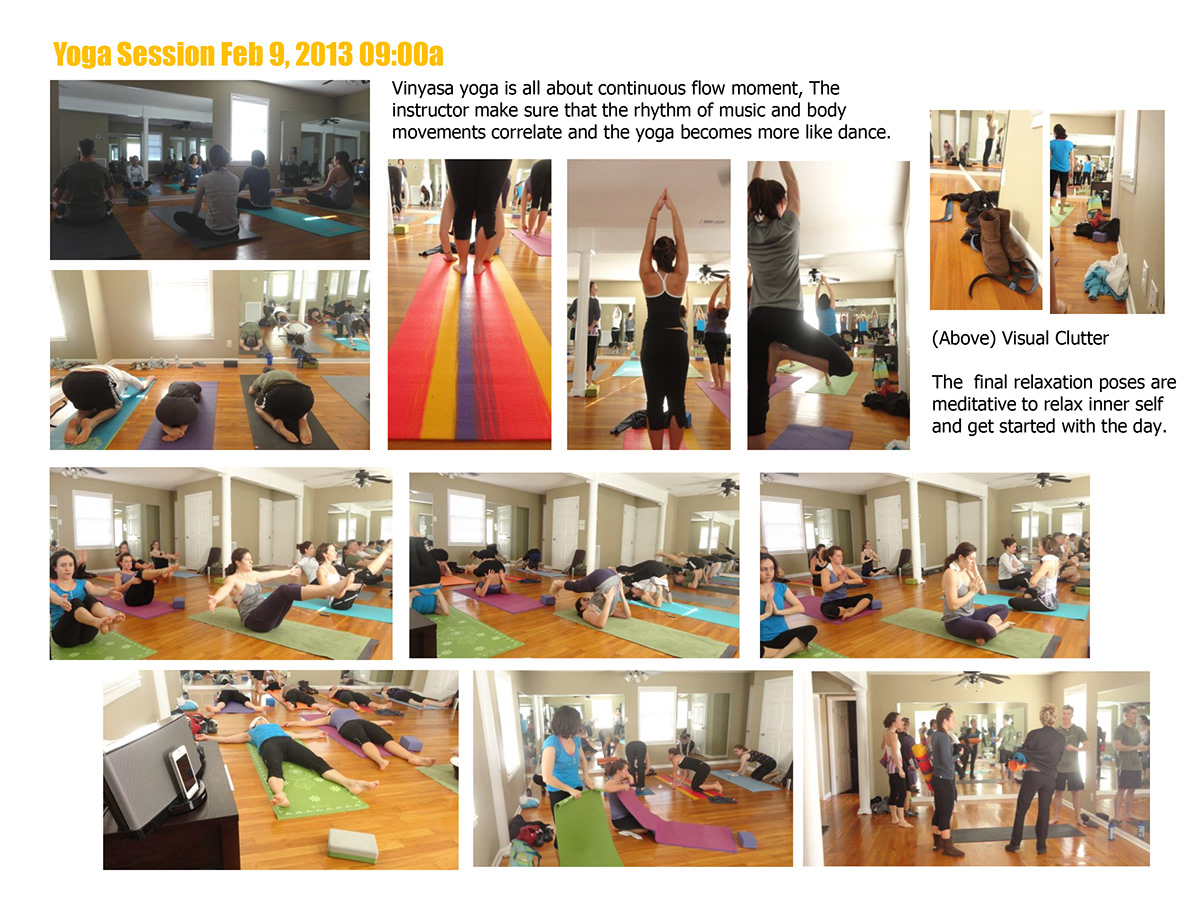
Observation at Sutherland Yoga Studio - Vinyasa Advance Class

Observation at Sutherland Yoga Studio - Vinyasa Beginner's Class
2. INTERVIEWING:
Interviews were conducted with both the “casual” and the dedicated Yogis, as well as the instructors and the studio owners. This allowed for a comprehensive study on the Yogi’s experience. These interactions provided insight into how participants perceive their own experience with Yoga, how the physical space interlaces with the spiritual practice of Yoga, what are the Yogi’s influences to start Yoga and why they dedicate themselves to the practice. This assisted with finding opportunities for the Yogi and Instructors as well as the Studio Owners in order to strengthen their business strategies for higher member registration and retention.
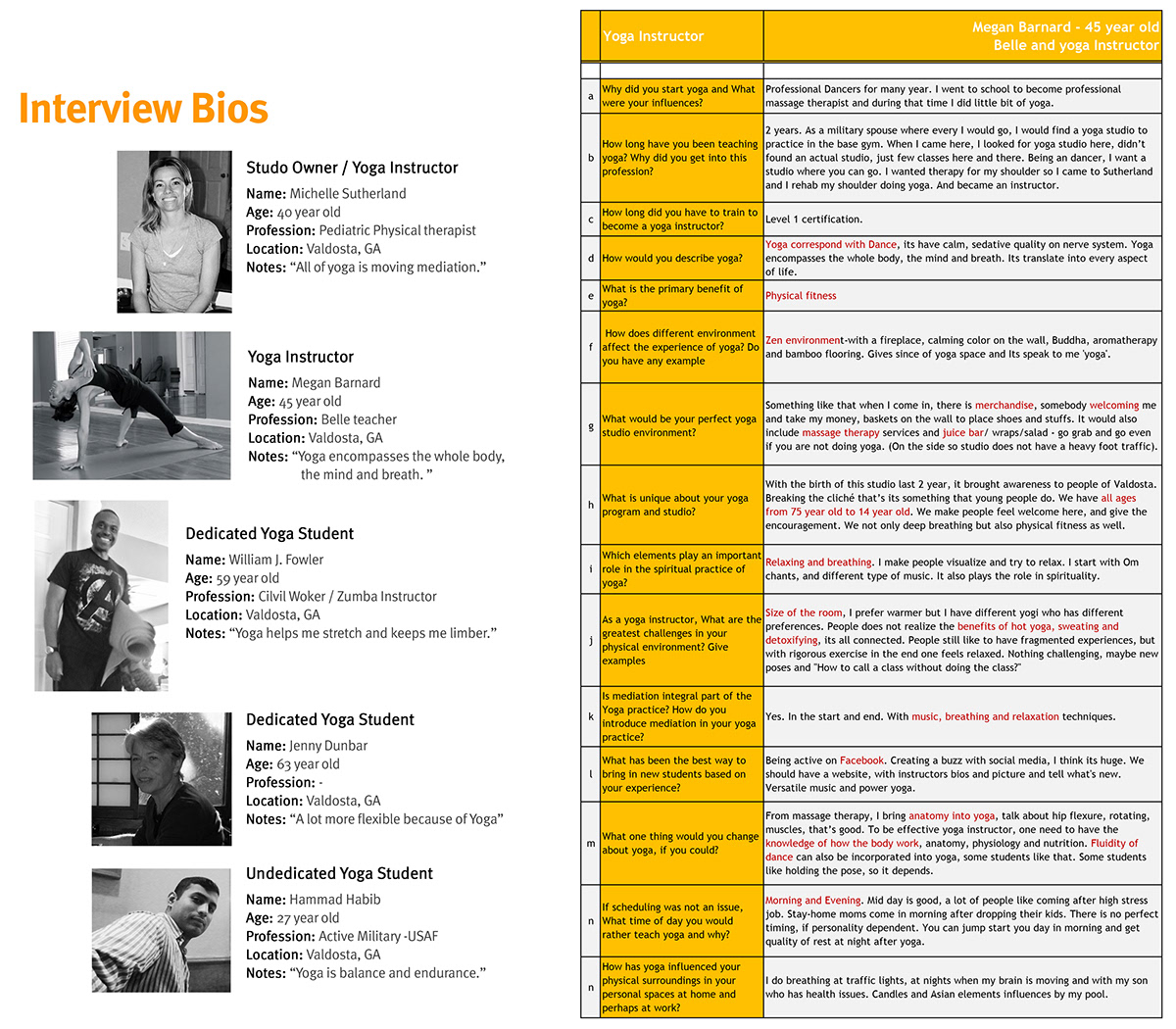
Interview bios and sample interview
3. THE WALL OF THOUGHTS:
We used this unique design method as a means of gathering data about the Yogi’s lives, values and thoughts. This reactionary style of research allowed for an additional method of input from the subjects. This probe was used to better understand the Yoga culture and how important the role of the studio environment plays.

Wall of thoughts

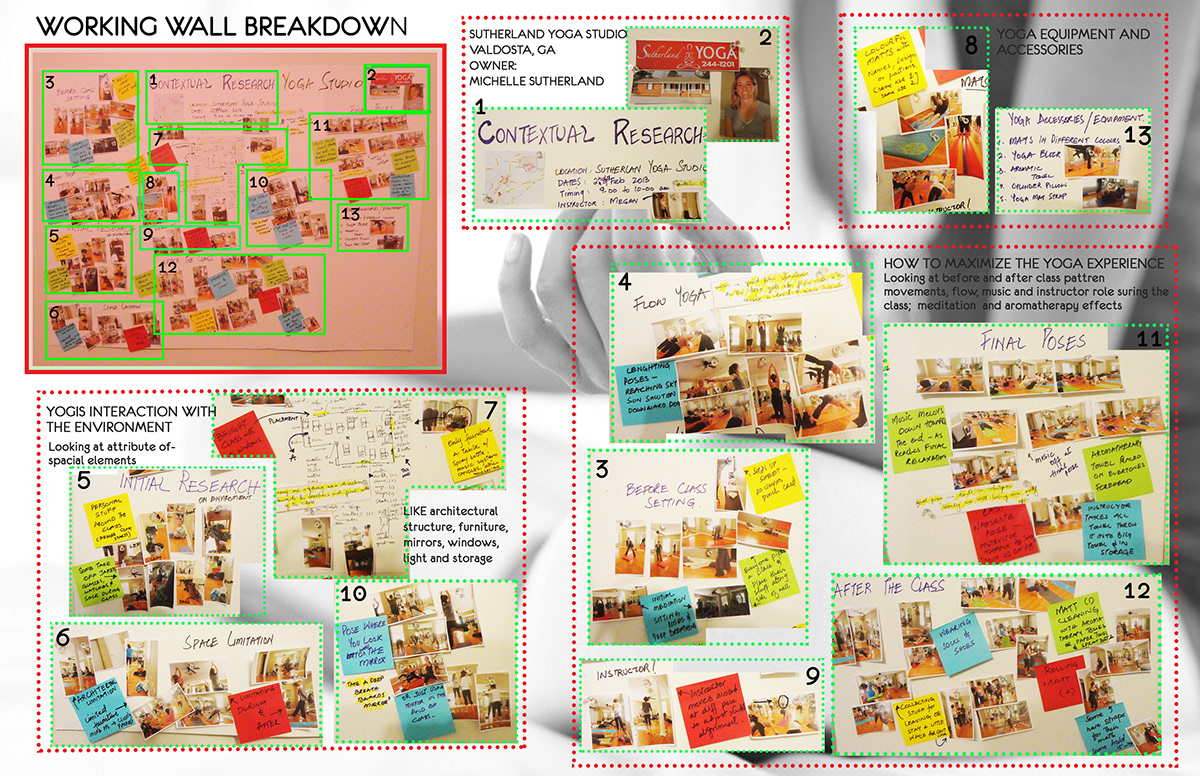
DATA ANALYSIS:
While analyzing the data, I noted emerging themes, trends, and patterns for further analysis and later comparison with other data sets.
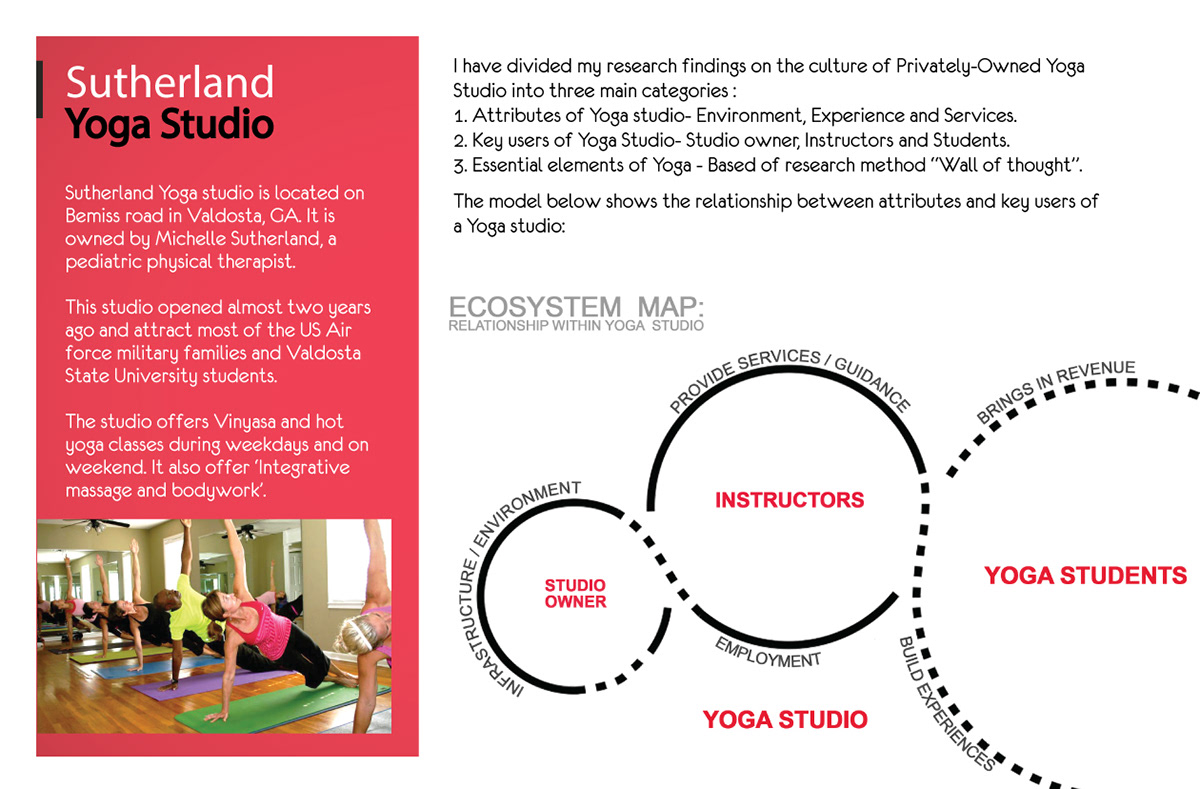



MODELS

Position Map

User Journey Map

Spider Map

Venn Diagram
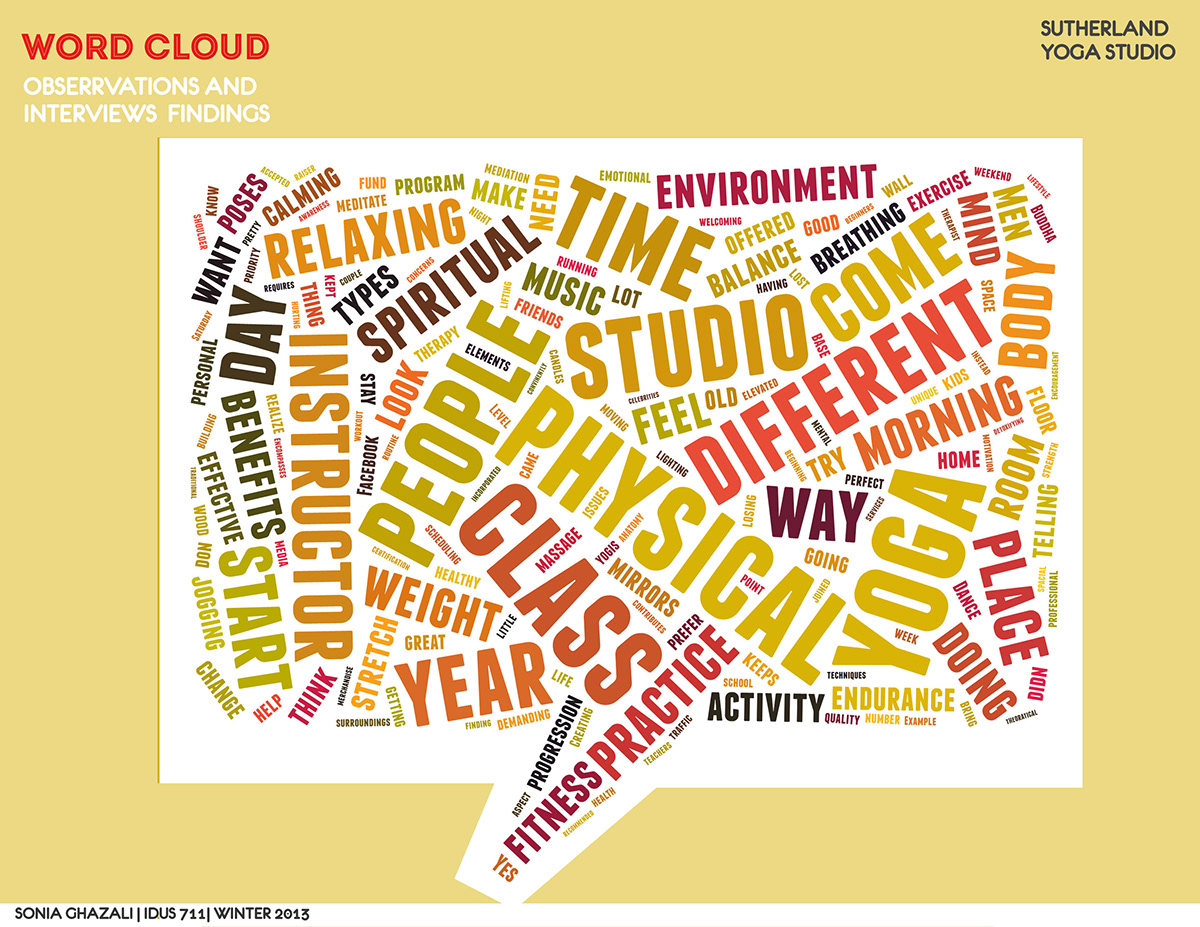
Word Cloud
INSIGHTS ANALYSIS


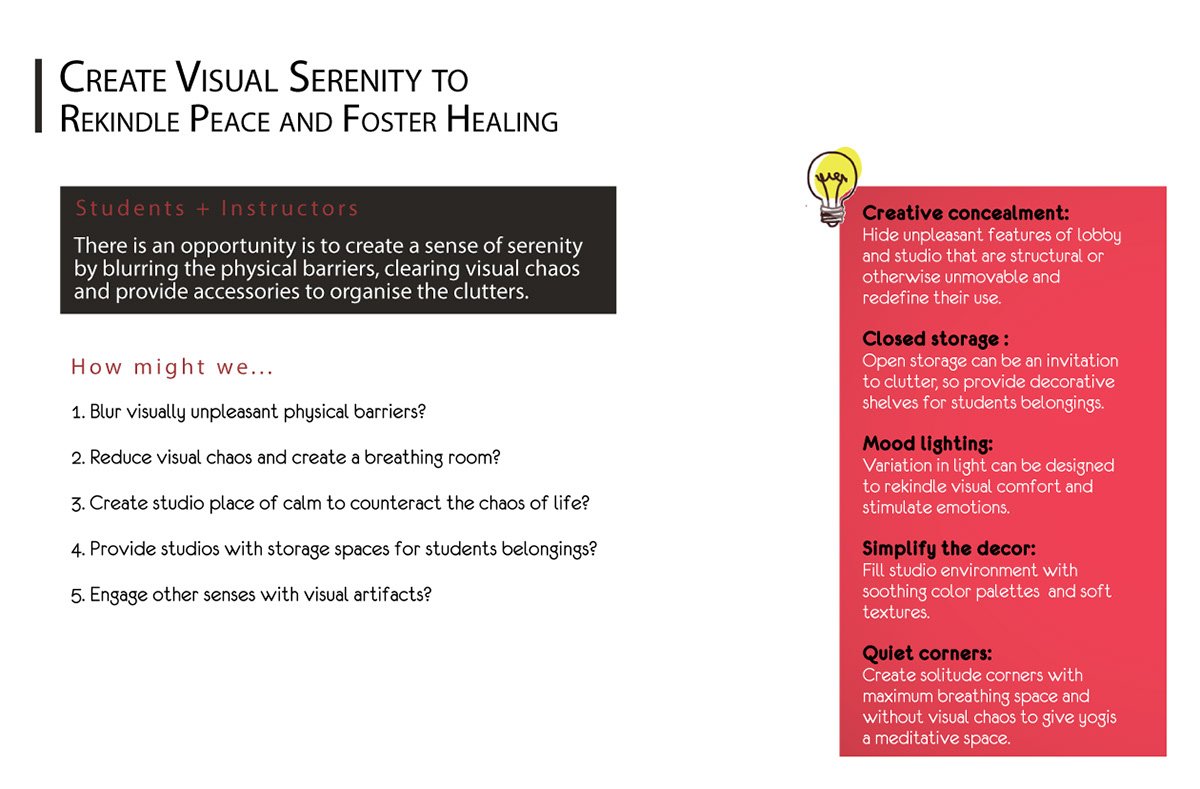
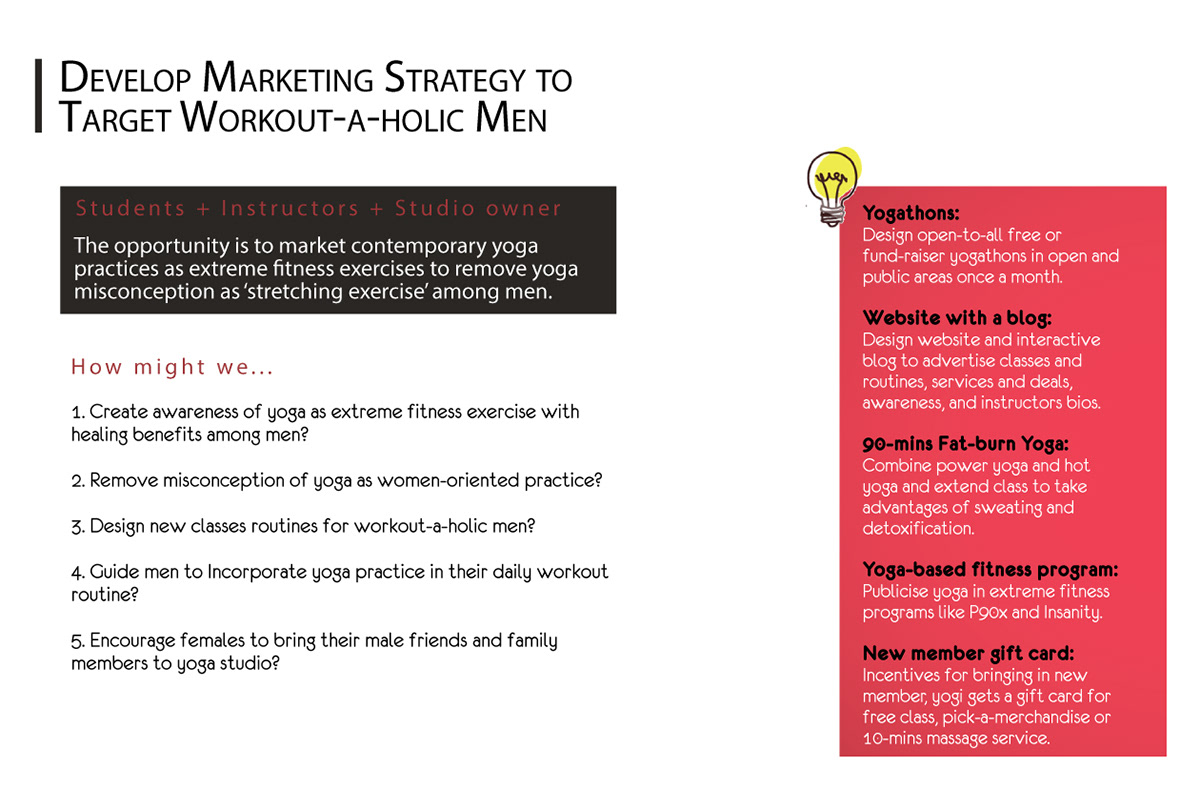
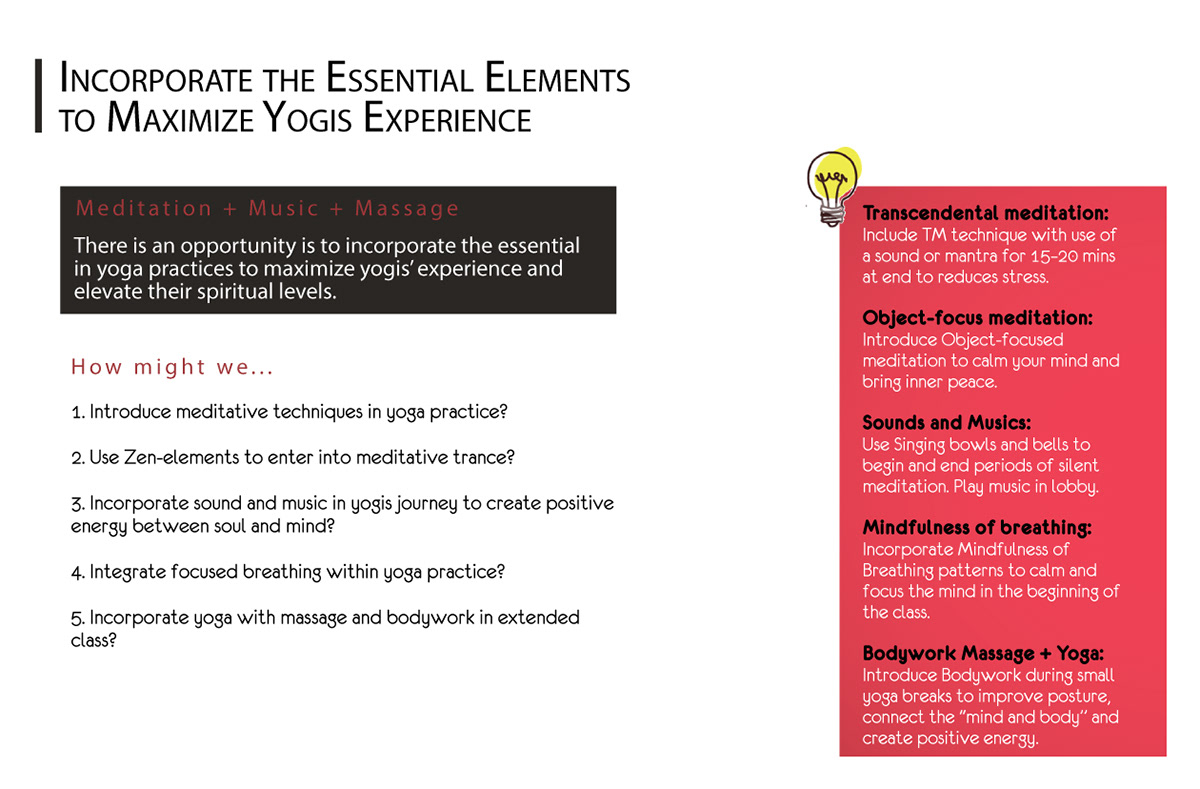
OPPORTUNITY STATEMENT:
Through this contextual research study, researchers developed a deep understanding of the yoga culture in stand-alone studios in different locations around the world, and includes the environment and stakeholders involved (owners, teachers, and students). Researchers used the knowledge to identify improvements to the Yoga studio facilities and it’s environment. They identified, within the operation of the studio, the potential to improve quality as per the demand of the yogis which will not only strengthen the business but also provided the possibility for expansion.
